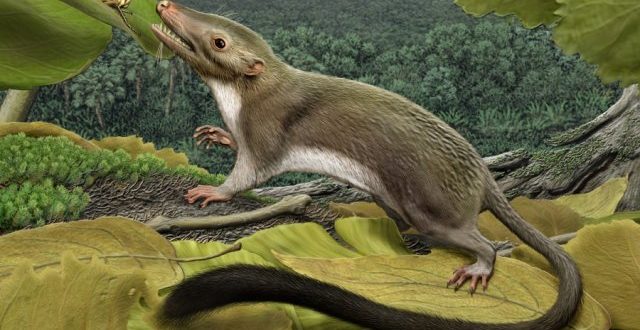New study has revealed that a prehistoric asteroid nearly wiped out all mammals along with dinosaurs. New data received has also revealed that the extinction was far more catastrophic than previously believed. The prehistoric asteroid struck Earth with such force that about 93 percent of mammal species became extinct. The asteroid hit took place more than 66 million years ago in the Cretaceous period.
In the research, lead author Dr. Nick Longrich of the Milner Centre for Evolution at the University of Bath’s Department of Biology & Biochemistry and his colleagues found that at least 93% of all known mammal species became extinct across the Cretaceous-Paleogene (K-Pg) boundary – the time marking the end of the Mesozoic Era and the start of the Cenozoic Era.
Specifically, they found that only four of 59 known species survived the impact event, far fewer than experts previously believed. However, their analysis also revealed that mammals were able to rebound far more quickly than experts had originally thought and that local diversity levels in North American experienced a “remarkably rapid” recovery less than 300,000 years later.
“Because mammals did so well after the extinction, we have tended to assume that it didn’t hit them as hard,” Dr. Longrich explained in a press release. “However our analysis shows that the mammals were hit harder than most groups of animals, such as lizards, turtles, crocodilians, but they proved to be far more adaptable in the aftermath.”
Fossil record biased towards surviving species, authors note
As part of their research, the study authors reviewed the published fossil record from western North America starting two million years before the K-Pg boundary through 300,000 years after the impact of the asteroid, comparing species diversity both before and after the event.
They found a correlation between the survival rates of the mammals and their geographic range, size, and abundance. In other words, species that were common and covered larger areas wound up being far more likely to avoid extinction as the result of the asteroid impact. This resulted in a sampling artifact in which rare creatures wound up being both more vulnerable to extinction and less likely to be recovered, they explained in their paper.
“The species that are most vulnerable to extinction are the rare ones, and because they are rare, their fossils are less likely to be found. The species that tend to survive are more common, so we tend to find them,” Dr. Longrich said. “The fossil record is biased in favor of the species that survived. As bad as things looked before, including more data shows the extinction was more severe than previously believed.”
Since the asteroid would have wiped out most types of plants and animals, those lucky few that managed to survive would have likely fed on insects that ate dead plants and animals. With the food supply so limited, only the smaller creatures would have survived, making it likely that no species larger than a cat would have escaped extinction in the wake of the impact.
‘Explosion of diversity’ witnessed in years following asteroid impact
Yet mammals rebounded far more quickly than experts had previously believed, as they were able to not only regain lost species diversity in a relatively short time but exceeded their earlier numbers by doubling the number of pre-extinction event species in just 300,000 years.
This recovery, Dr. Longrich said, occurred in different ways in different places. For instance, species that emerged in Montana ended up being distinct from those in other, nearby states, he and his colleagues said. This rapid regional increase in both diversity and disparity is unusual in geographically restricted studies, they added.
“You might expect to see the same few survivors all across the continent,” Dr. Longrich said. “But that’s not what we found. After this extinction event, there was an explosion of diversity, and it was driven by having different evolutionary experiments going on simultaneously in different locations. This may have helped drive the recovery.”
“With so many different species evolving in different directions in different parts of the world, evolution was more likely to stumble across new evolutionary paths,” he continued, adding that “it wasn’t low extinction rates, but the ability to recover and adapt in the aftermath that led the mammals to take over.”
Agencies/Canadajournal
 Canada Journal – News of the World Articles and videos to bring you the biggest Canadian news stories from across the country every day
Canada Journal – News of the World Articles and videos to bring you the biggest Canadian news stories from across the country every day




I am truly amazed at the stupid and obvious facts that scientists announce… Of course if an asteroid hit the earth -all life would be affected… Mammals did not have bullet proof vests or bomb shelters. WOW… It must be climate change affecting their brains,
And because they are scientists everyone is suppose to believe them, I like the facts, the history of the world has been recorded through writings, the bible says the world was flooded because of sin and when the sediment settled it buried everything , and that’s why you have fossils all over the world buried, even on the highest mountains , 66 million years ago ,come on you know how long that really is.